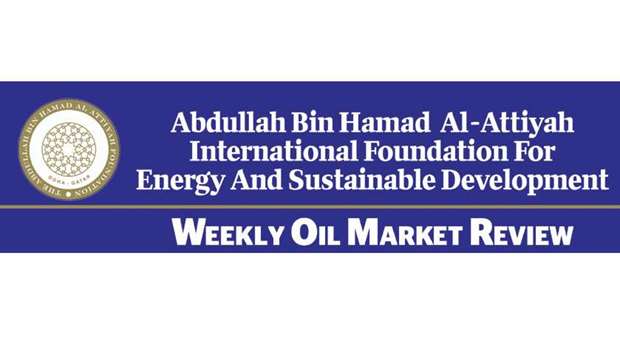Oil
Benchmark oil futures continued their rally for a second week as supporting factors overshadowed downward price pressures. As a consequence, Brent and WTI gained around 7% over two weeks.
The recent rally was maintained by the recovery in global equity markets; the surprising fall in US crude oil stocks; and the disruption of supplies from the Libyan El Feel field, all of which conspired to push prices higher. The US stock drawdown was due to oil market backwardation, lower imports and higher exports.
Statements by the Saudi Arabian energy minister also supported prices when he gave renewed assurances that Saudi production would remain below its Opec production cap. The minister also suggested that prevailing production limitations would be eased sometime next year, and a new cooperation platform between Opec and its allies would be adopted to fast-track the decision-making process.
Oil price gains were again capped by strong US production and rising exports. US drillers added another rig to reach 799, the highest number since April 2015. US Dollar fluctuations also weighed on the prices. The second quarter oil market is preparing for the driving season. Refineries are ramping up maintenance plans to prepare for the summer season peak demand. Meanwhile, oil prices might remain volatile due to competing factors influencing supply and demand fundamentals and other global economic factors.
Gas
North Asian LNG spot prices for March delivery held steady at almost $9.9/mmbtu, slightly lower than the previous highs achieved in January and February. Overall, global gas demand remained robust due to continued cold weather in the Northern hemisphere and LNG production outages at Malaysia’s Bintulu and US Sabine Pass plants. Taken together, these events led to firmer prices, leaving those buyers, who had previously delayed purchases for the front month, disappointed.
The reduced production from the 29 mtpa Bintulu LNG production plant was due to a gas leak from a supply line, while the reduced sales from the 18 mtpa US Sabine Pass plant was due to reduced feed-gas. In response, Petronas is believed to have bought a cargo from Australia’s APLNG to cover its lost Bintulu production and Cheniere was forced to look for reloaded LNG cargoes from Europe to compensate for its losses.
In the UK, NPB wholesale gas prices rose ahead of forecasts of colder weather, leading to higher gas demand. The cold snap coincides with reduced gas supplies from the Groningen field and at a time of lower storage volumes and LNG imports. To meet the expected spike in gas demand, European gas prices are expected to rise in order to compete with the Asian LNG premium market. The US Henry Hub front month futures price remained close to the lowest level reached since August 2016. Nevertheless, the demand forecast is stabilising as the winter season ebbs. US natural gas production for the next two weeks is forecast to be well above the February’s average, leading to additional downward pressures on gas prices, overshadowing the outlook for colder weather.
n Sofiane Ghezali is senior energy researcher at Abdullah
bin Hamad Al-Attiyah International Foundation for Energy and Sustainable Development.

oil market


